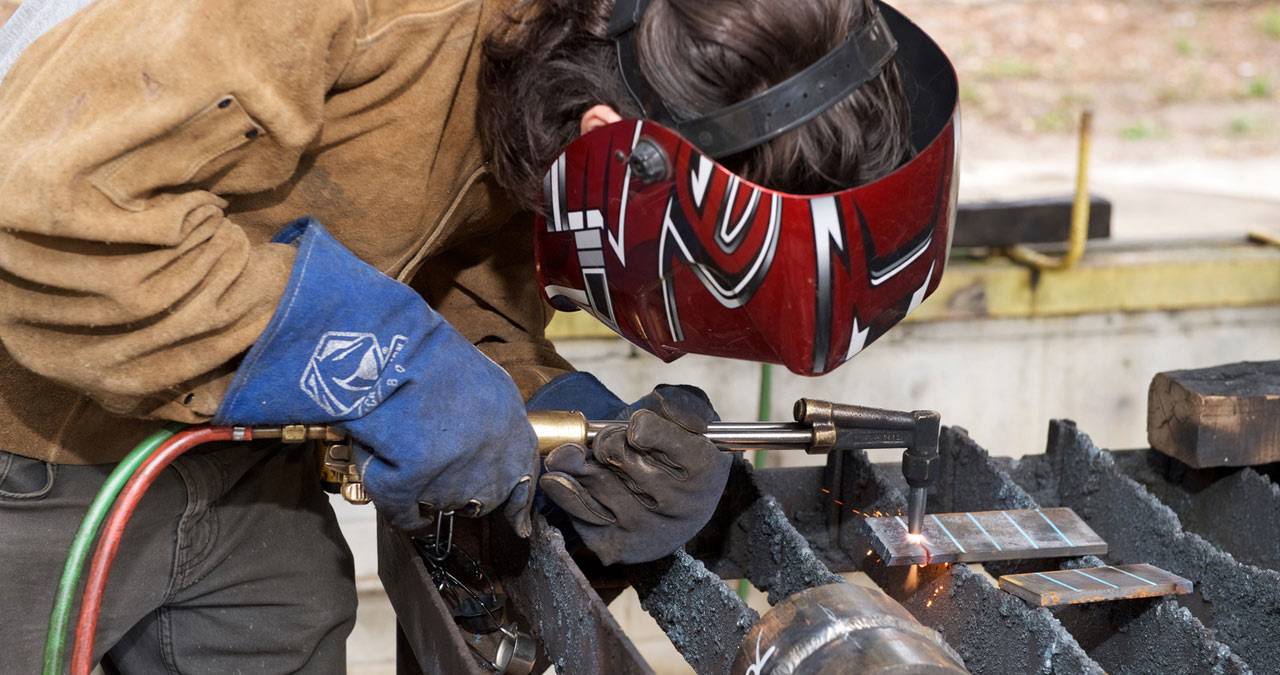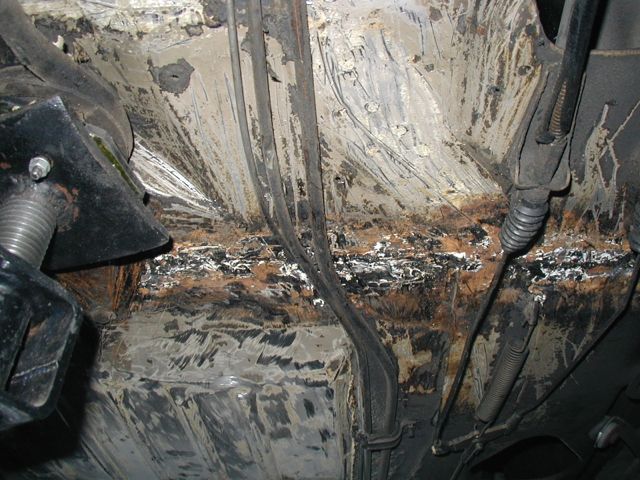Typical Welding Repair Service Issues and How to Address Them Effectively
Welding fixings frequently come across a series of problems that can endanger the integrity of the end product. Usual issues consist of inadequate infiltration, porosity, and imbalance, among others. Each problem provides unique obstacles that need specific approaches for resolution. Comprehending these issues is necessary for welders aiming to enhance their skills and results. This discussion will certainly discover these usual welding repair concerns and efficient methods to resolve them.
Inadequate Penetration
Inadequate infiltration happens when the weld metal stops working to totally fuse with the base product, leading to weak joints and prospective architectural failings. This issue commonly originates from inadequate warm input, incorrect electrode angle, or improper welding speed. Welders may come across inadequate penetration as a result of a miscalculation of the necessary specifications for a certain material thickness or type. Additionally, contamination on the base material's surface area can prevent reliable bonding, exacerbating the problem. To deal with poor penetration, welders must guarantee ideal setups on their tools and keep a clean work surface area. Routine inspection of welds is recommended to recognize any type of shortages early, allowing for prompt improvements and the avoidance of endangered architectural honesty in welded assemblies.
Porosity
Porosity is a typical flaw in bonded joints that materializes as small gas bubbles caught within the weld steel. This defect can jeopardize the stability of the weld, bring about minimized strength and possible failure under stress and anxiety. Montana Mobile Welding and Repair Belgrade Welding. Porosity generally arises from contamination, wetness, or incorrect welding methods, which enable gases to run away into the molten weld pool. To attend to porosity, welders need to assure correct surface area prep work, preserve a tidy workplace, and use ideal welding parameters. Additionally, picking the ideal filler product and shielding gas can mitigate gas entrapment. Normal assessment and testing of welds can help identify porosity early, assuring timely rehabilitative activities are taken, thus maintaining the quality and dependability of the bonded framework
Misalignment
Misalignment in welding can emerge from numerous elements, including inappropriate configuration and thermal expansion. Comprehending the origin is crucial for efficient resolution. Numerous modification techniques are available to realign parts and assure architectural honesty.
Reasons for Misalignment
Welding imbalance typically originates from a range of underlying issues that can jeopardize architectural honesty. One primary reason is improper fit-up of parts before welding, which can result in gaps and unequal surfaces. Variations in thermal expansion during the welding process can additionally cause distortion, particularly if the materials being joined have different coefficients of expansion. In addition, inadequate fixturing and securing may fall short to hold elements firmly in place, resulting in movement during welding. Poorly kept tools, consisting of welding devices and devices, might present incongruities in the weld bead, more adding to misalignment. Operator error, stemming from not enough training or experience, can also play a considerable role in developing misaligned welds.

Correction Methods Offered
Resolving imbalance efficiently needs a mix of restorative strategies tailored to the details issues at hand. One common technique is the usage of jigs or components to hold parts in the appropriate position throughout welding, making sure constant alignment. Furthermore, preheating the materials can help in reducing distortion and improve fit-up. For significant imbalance, mechanical realignment strategies, such as utilizing hydraulic jacks or clamps, can be employed to deal with the position before welding. Post-weld warm therapy might likewise be essential to alleviate stress and anxieties created by imbalance. Finally, mindful assessment and adjustment throughout the setup stage can prevent imbalance problems from becoming significant troubles, advertising a smoother welding procedure and boosting overall architectural integrity.
Distortion
Distortion is an usual obstacle in welding that can develop from different variables, consisting of unequal heating and cooling. Understanding the sources of distortion is vital for executing effective prevention techniques. Addressing this issue not only enhances structural stability however also boosts the general quality of the weld.
Sources of Distortion
When subjected to the intense warm of welding, materials usually undergo modifications that can cause distortion. This sensation mostly arises from thermal growth and tightening during the welding process. As the weld location warms up, the material expands; upon air conditioning, it gets, which can create interior stress and anxieties. Furthermore, uneven home heating across a work surface can intensify these tensions, causing warping or flexing. The sort of product also plays a significant role; metals with differing thermal conductivity visit their website and coefficients of development might respond differently, bring about uncertain distortions. Furthermore, poor joint design and inadequate fixturing can add to misalignment during welding, enhancing the likelihood of distortion. Understanding these reasons is important for efficient welding fixing and prevention methods.
Prevention Techniques
Efficient prevention techniques for distortion during welding concentrate on regulating warm input and making certain appropriate joint style. Maintaining a constant warm input aids to minimize thermal development and tightening, which can result in distortion. Making use of methods such as preheating the workpiece can likewise lower the temperature slope, advertising consistent heating. In addition, choosing ideal joint styles, such as T-joints or lap joints, can improve security and decrease anxiety focus. Executing correct fixturing to secure the work surfaces in position better aids in keeping positioning throughout the welding process. Staggered welding sequences can distribute warmth extra equally, preventing local distortion. By using these methods, welders can considerably reduce the possibility of distortion and boost the overall high quality of their welds.
Fracturing
Breaking is an usual concern encountered in welding repairs, often arising from numerous variables such as incorrect air conditioning rates, material selection, or poor joint preparation. The occurrence of cracks can significantly jeopardize the honesty of the weld, causing possible failures during operation. To resolve this problem, welders must initially evaluate the origin, ensuring that products work and properly picked for the certain application. Furthermore, regulating the cooling rate throughout the welding procedure is important; quick air conditioning can induce stress and anxiety and lead to breaking. Appropriate joint layout and prep work also contribute to lessening the danger. Implementing these methods can boost weld quality and toughness, eventually reducing the chance of cracking in ended up weldments.

Incomplete Fusion
A significant issue in welding repair services is insufficient fusion, which takes place when the weld metal does not adequately bond with the base product or previous weld passes - Fabrication. This issue can result in weak points in the joint, possibly compromising the stability of the bonded structure. Variables adding to insufficient combination consist of inadequate warmth input, improper welding technique, home and contamination of the surface areas being joined. To resolve this issue successfully, welders must ensure correct pre-weld cleaning and surface area prep work, along with readjust their welding parameters to accomplish adequate penetration and blend. Regular inspection during the welding process can likewise aid identify incomplete combination early, allowing for timely corrective steps to enhance the general high quality of the weld
Overheating
While welding repair services can enhance structural stability, overheating presents a substantial challenge that can result in material degradation. Extreme heat throughout welding can change the mechanical homes of steels, causing decreased toughness, enhanced brittleness, and warping. This sensation is specifically important in high-stress applications where architectural reliability is vital. Determining overheating welding at home can entail visual inspections for discoloration or distortion, along with keeping track of temperature during the welding process. To minimize the risks associated with getting too hot, welders need to utilize proper strategies, such as regulating warm input, changing traveling speed, and making use of ideal filler products. In addition, implementing pre- and post-weld warmth therapies can assist bring back product properties and boost the general high quality of the repair work, making sure long-term performance and security.
Often Asked Inquiries
What Are the Common Indicators of a Welding Problem?

Just How Can I Check My Welds for Top quality?
To check welds for high quality, one can use aesthetic evaluations, ultrasonic testing, and radiographic techniques. Each technique ensures architectural honesty, recognizes defects, and confirms adherence to defined criteria, eventually boosting the integrity of the bonded joints.
What Security Safety Measures Should I Take While Welding?
When welding, one must prioritize safety by using ideal personal safety devices, ensuring appropriate air flow, protecting flammable products away, maintaining a tidy work space, and knowing surroundings to stop crashes and injuries.
Can I Fix a Weld Without Renovating the Entire Joint?
Fixing a weld without remodeling the entire joint is feasible, relying on the damage (Montana Mobile Welding and Repair Welding). Strategies such as grinding, including filler material, or making use of a welding process can successfully resolve certain defects while protecting the bordering structure
What Devices Are Crucial for Efficient Welding Repair Works?
Crucial tools for effective welding repairs consist of a welding maker, cable brush, mill, protective equipment, clamps, and filler materials. Each device plays an essential role in ensuring top quality and security during the fixing procedure. Porosity usually occurs from contamination, dampness, or improper welding strategies, which enable gases to run away into the liquified weld pool. Improperly maintained devices, including welding devices and devices, might introduce inconsistencies in the weld grain, more adding to misalignment. When subjected to the intense warm of welding, products usually go through adjustments that can lead to distortion. Splitting is a typical issue experienced in welding fixings, frequently resulting from various elements such as incorrect cooling rates, material choice, or inadequate joint preparation. A considerable problem in welding fixings is incomplete blend, which occurs when the weld steel does not sufficiently bond with the base material or previous weld passes.